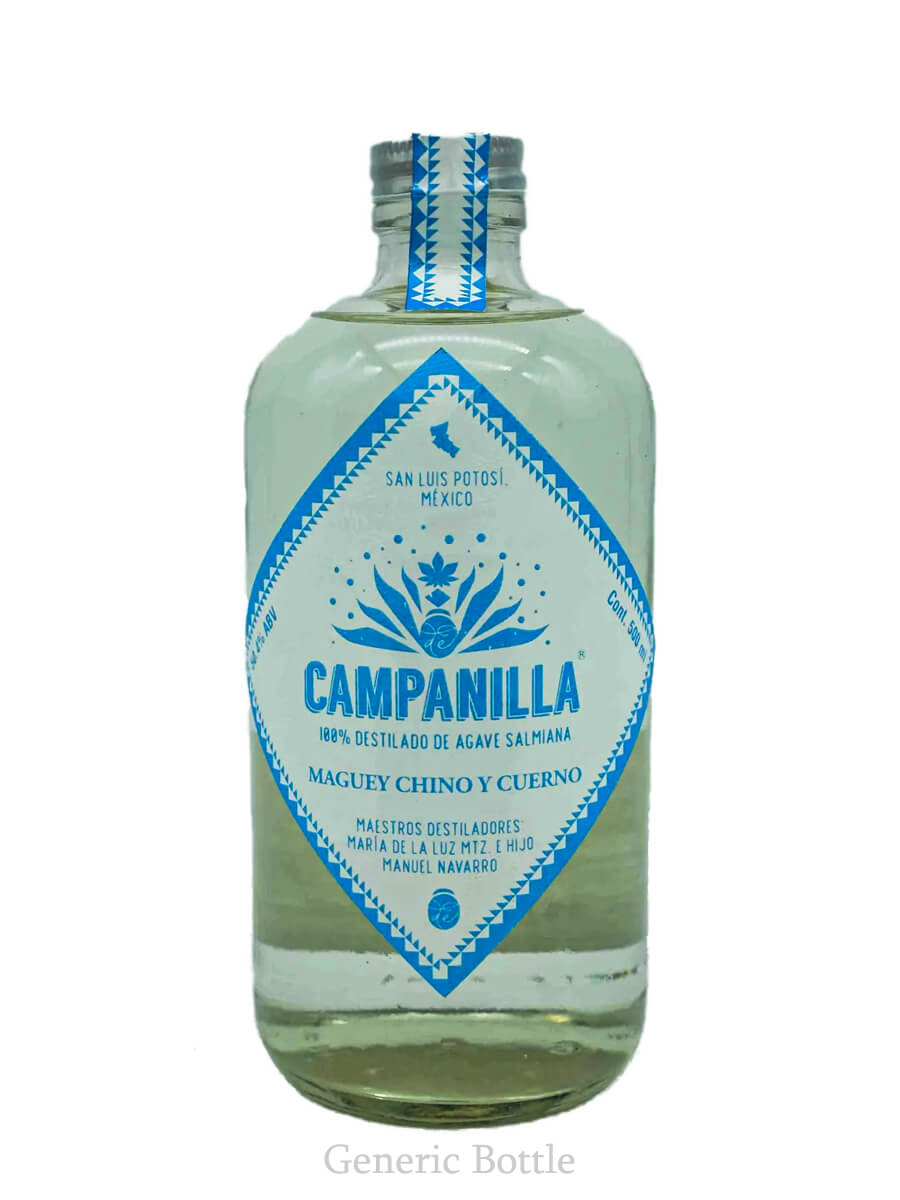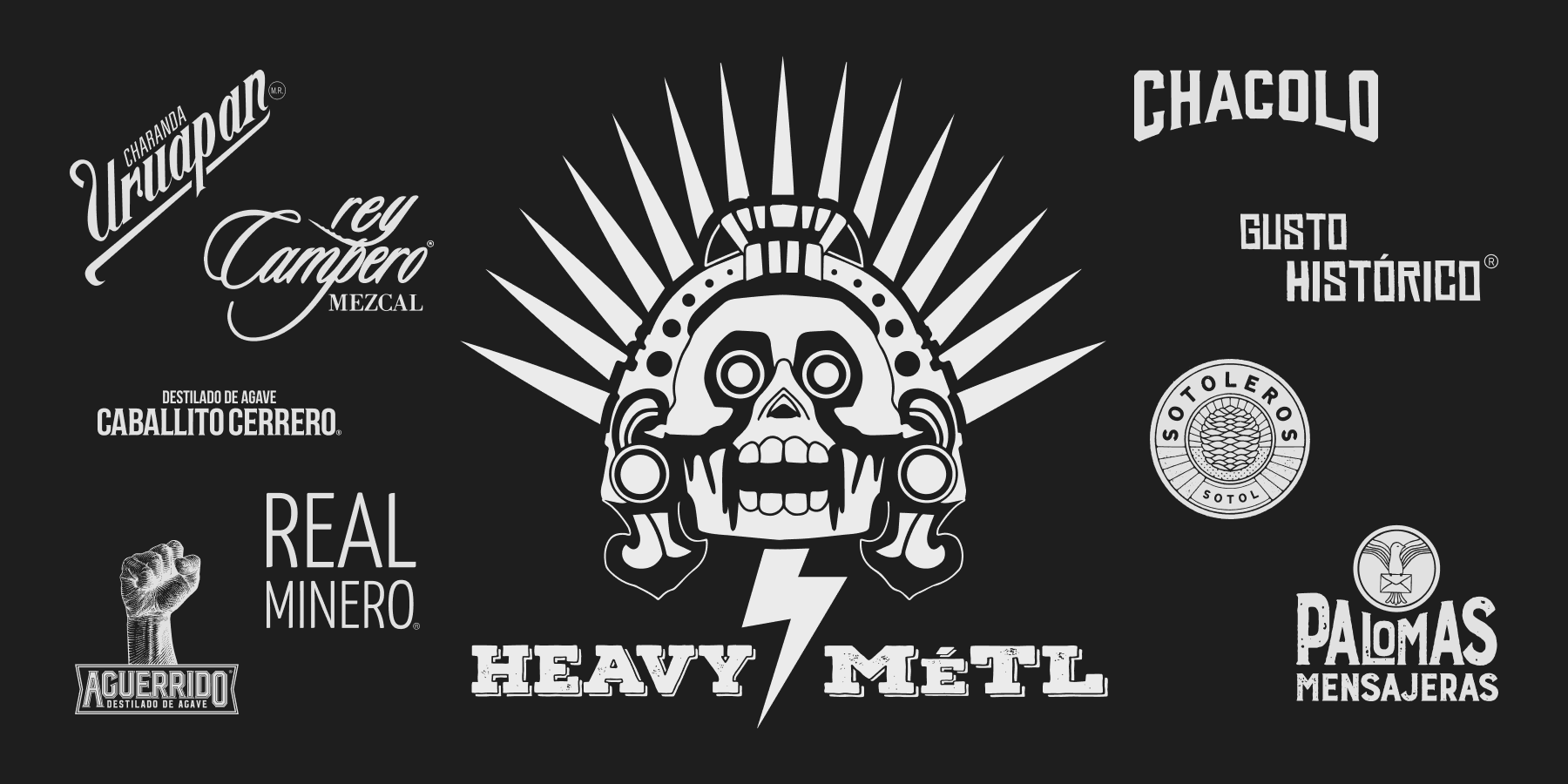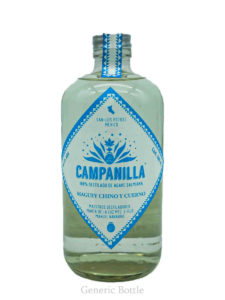Campanilla Verde is produced in the state of San Luis Potosi. This mezcal is made with maguey Verde (Agave salmiana)
About this destilado de agave
Campanilla Verde is produced in the state of San Luis Potosi. This mezcal is made with maguey Verde (Agave salmiana). Due to the lack of wood in the region, the oven used to cook the agave is different from the conical pit used in the majority of other mezcal producing states. A burner lies below, which is fed with Mezote (the dry bottom of agave) and dry pencas for 12-14 hours. Then the burner gets sealed and the agave cooks for a further 48 hours. The agave is then crushed by tahona, and feremted with a few liters of pulque to help jumpstart the fermentation process. Lastly, the agave is distilled using a process known as campanilla style distillation, which is now an almost extinct style of distillation using clay pots in a unique fashion.
You can learn more about this Campanilla style distillation on the Agavera website.
Campanilla del Palmar
Campanilla del Palmar is produced by the highly acclaimed Maestra Maria de La Luz Martinez and her two sons Jaime and Manuel Navarro in the community of Palmar Segundo in the state of San Luis Potosi, in Central Mexico. The family has been producing mezcal or destilados de agave using rare and very labor intensive clay pot stills for 8 generations.
The Navarro’s work with 4 different subspecies of agave Salminana that are locally known as Verde, Cuerno, Chino, and Blanco. For all of their destilados, they only ferment the agave juice, the fibers from the heart of the agave, and pulque, which helps to jump-start the fermentation process.
Unlike the Filipino stills, which have an exit spout in the top chamber of the still, their stills are very different in that the top clay pot chamber (caparote) has a smaller 15-liter clay pot hanging inside it that is used for collecting the condensed spirits. The suspended catchment vessel resembles a little bell, or campanilla, which has historically been referred to as being a Mongolian type of still.
Also unique to this clay pot distillation method, is that the water in the copper condenser dish is hand-ladled to keep it cool throughout both distillations, whereas most Filipino stills that have a constant source flowing through the condenser dish.
Older batches also simply go by the name Campanilla on the label of these bottles.
Review this bottle
Login or create an account to add your tasting notes











aarild
153 reviewsLot “VEDEU”, bottle 27/54
Mineral, vegetal nose, ethyl acetate (a bit like pear and/or apple flavoured candy), eucalyptus, the smell of a sizzling clay bowl padrón chilies, straight from the oven.
On the palate: Parsley and lemon rinds – gremolata! – peeled cucumber, guava, discreet and not too sweet candy floss. Towards the end cactus fig/prickly pear, really long aftertaste. Nice minerality and very light smoke.
Thoughts: I have never had a tepextate/marmorata that was clay pot distilled, but I would imagine it would be a bit like this one. The flavours remind me quite a bit about Rey Campero Tepextate apart from the latter being smokey. Generally, this is rounder and more structured. Great bottle, very special.
Lot “VEDEU”, bottle 27/54
Mineral, vegetal nose, ethyl acetate (a bit like pear and/or apple flavoured candy), eucalyptus, the smell of a sizzling clay bowl padrón chilies, straight from the oven.
On the palate: Parsley and lemon rinds – gremolata! – peeled cucumber, guava, discreet and not too sweet candy floss. Towards the end cactus fig/prickly pear, really long aftertaste. Nice minerality and very light smoke.
Thoughts: I have never had a tepextate/marmorata that was clay p